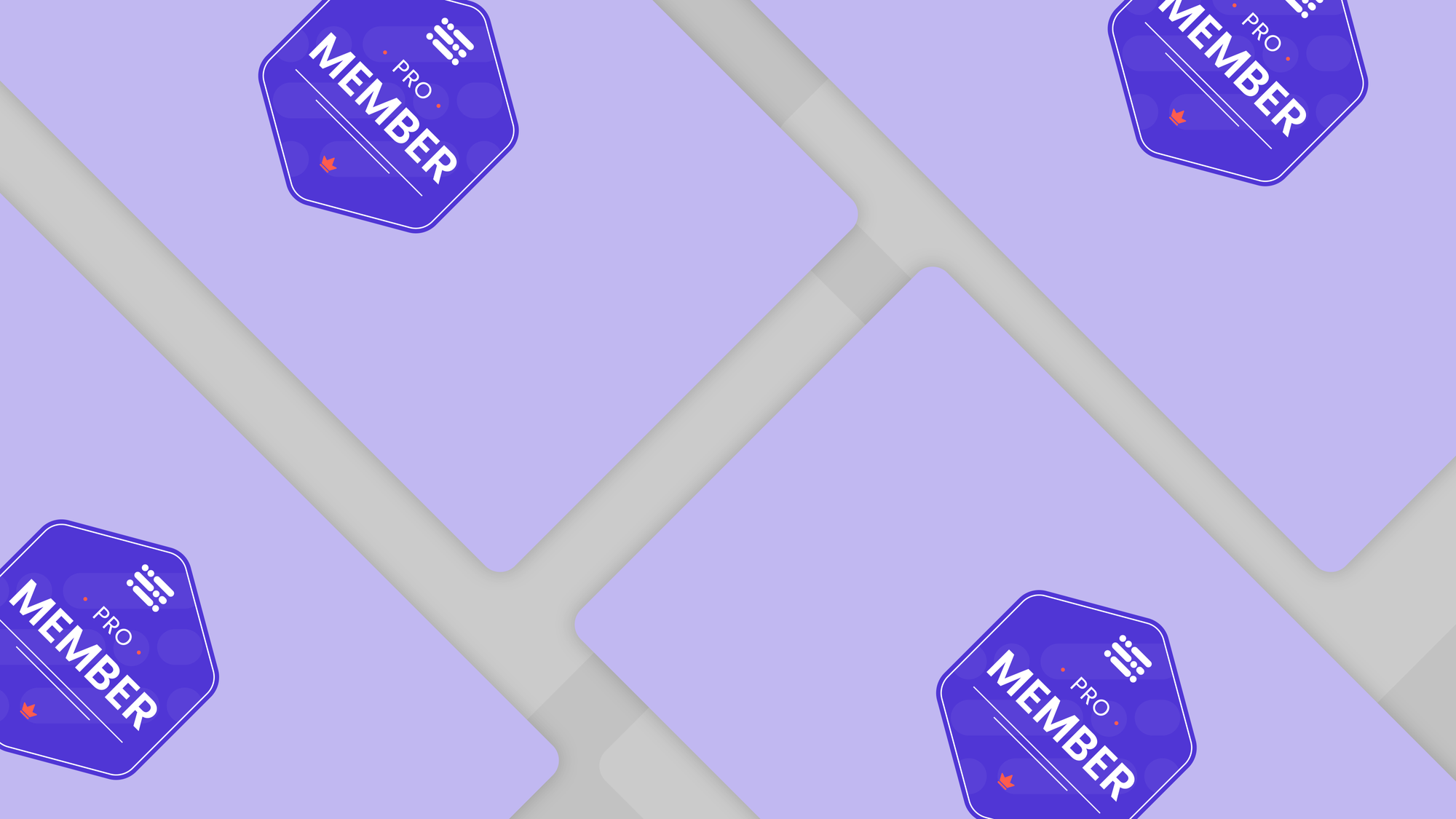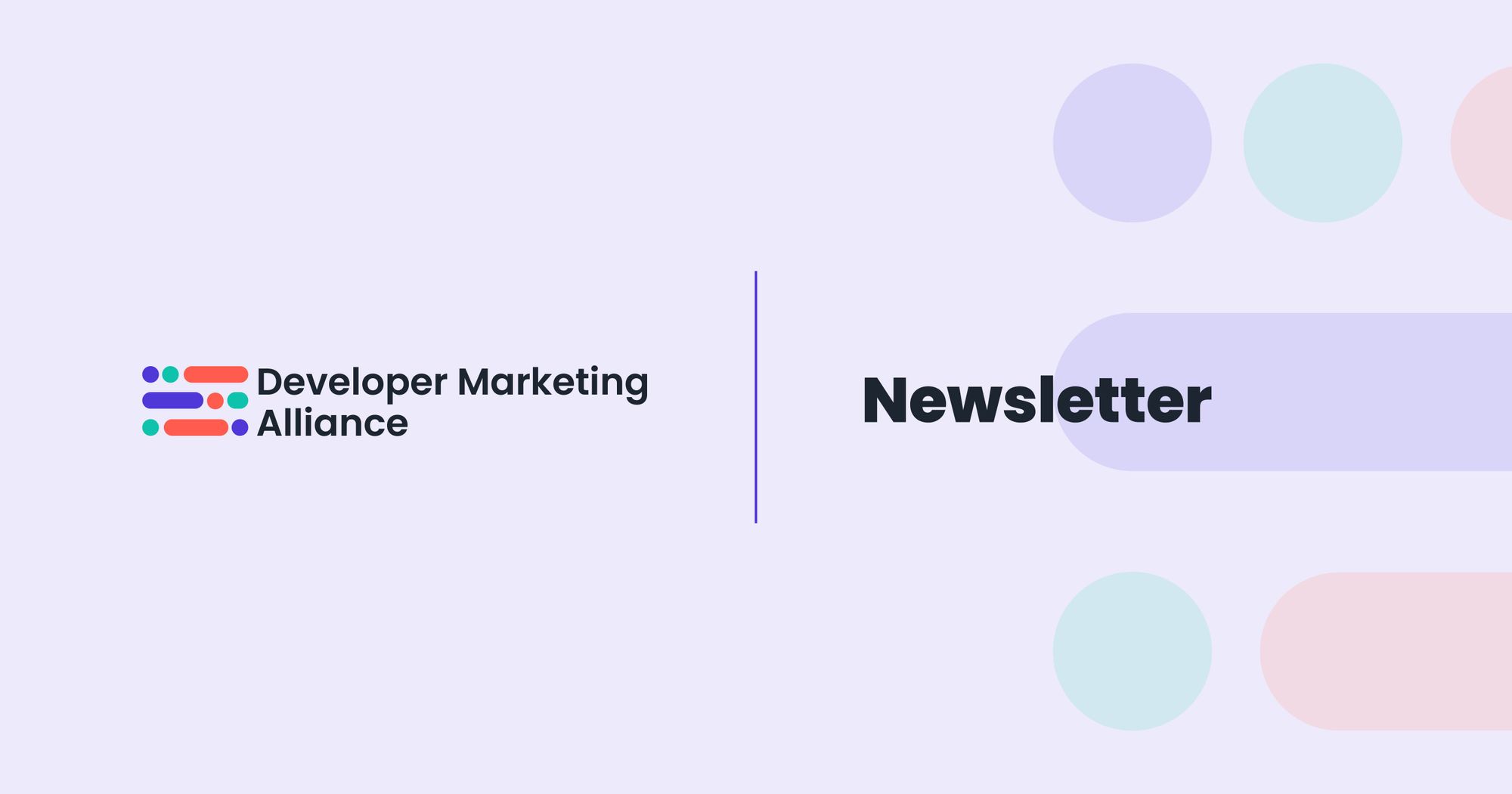What is developer marketing and why is it so important?
Developer marketing involves techniques and strategies aimed at raising awareness, driving adoption, and boosting the championing of SaaS platforms, tech solutions, etc. Peer validation is incredibly important in developer marketing, as is the relationship between marketers and developers.
In short, developer marketing is all about personalizing and adapting your marketing efforts to take developers into account, a fragmented audience who dislike traditional marketing in general.
Here’s an in-depth look into developer marketing, what it is, its benefits, and how to make the most of your audience. 👇
- What is developer marketing?
- What is B2D marketing?
- B2B, B2C, B2D
- How is B2D marketing different from traditional marketing?
- Marketing to developers: who does it?
- B2D companies
- Who’s your developer audience?
- Why market to developers?
- Developer marketing best practices
- Developer marketing challenges
- Creating a developer marketing plan
- Measuring the impact of your developer marketing plan

Psst! Why not download this article in ebook format, so you'll always have these insights at your fingertips?
What is developer marketing?
Developer marketing is focused on growing awareness, adoption, and advocacy of tech tools and solutions, including SaaS. Developer marketing is also known as business-to-developer marketing, and differs from other marketing approaches because it targets the developer persona.
There are some key elements specific to developer marketing, such as community and peer validation, so keep this in mind when creating your marketing plans or advocacy programs.
Another thing to remember is that the developer audience is resistant to traditional marketing strategies, so avoid the hard sell – focus on helping developers solve their problems and on educating them about your product instead.
So, the answer to 'what is developer marketing?' is that dev marketing is about getting developers’ attention; but, because they’re a fragmented community, the usual B2B and B2C tactics don’t work.
What is B2D marketing?
Business-to-developer, B2D marketing, and developer marketing are different ways of saying the same thing. B2D marketing refers to the tactics and strategies used to promote your product to a technical audience.
B2D marketing does shares similarities with B2B and B2C. For example, as developers are the product's consumer, engagement tactics like word-of-mouth work well, just like with B2C marketing, while product support is expected both in B2D and B2B marketing.
However, despite the similarities, B2D marketing is considered its own 'thing' because of the target customer; developers are a unique audience with specific pain points, expectations and challenges, which can vary from B2B and B2C customers.
Successful B2D marketing plans often include both developer relations and marketing methods.
B2D meaning
B2D involves marketing products or services to developers. This approach differs from other business models because it primarily targets software developers, technical professionals, and other individuals who are involved in creating or integrating technological solutions.
B2B, B2C, B2D
Now that we understand what B2D means, let's discuss the differences between B2B, B2C, and B2D marketing. These terms refer to various target audiences.
B2B marketing, or business-to-business marketing, involves promoting products and services from one business to another. This means marketing efforts are geared towards other companies, institutions, and organizations.
However, it's important to keep individual personas in mind when creating marketing campaigns, as marketing to a business often means selling to a CEO, CMO, or Director.
B2C marketing, or business-to-consumer marketing, focuses on promoting products directly to consumers for personal use. The goal of this type of marketing is to raise awareness of and generate interest in a company's offerings.
While B2C can feel more personal, it's crucial to remember that personas and archetypes represent groups rather than individual people. Therefore, it's essential to find people who share common pain points, needs, interests, etc. and market to all of them at once.
B2D marketing is similar to B2B in that the target audience expects support for your product. However, when it comes to sales, B2D is more akin to B2C, as price points can be low, and sales can happen quickly.
The approach and tactics used in B2B, B2C, and B2D marketing vary depending on the target audience, and the strategies used in each type of marketing can differ as well.
How is B2D marketing different from traditional marketing?
Marketing to developers is different from marketing to other audiences because of their nature.

Developers are a tech-minded bunch. They’re very sophisticated, keen to use the latest technologies, passionate about the tools they’re already used to, avoid clicking on ads, and trust their peers’ opinions over most people’s. They also like the sense of community and rely on it heavily.
With these traits in mind, you must formulate a marketing plan tailored to devs.
Developers don’t like the idea of being marketed to, as they tend to be apprehensive about ads and traditional sales techniques. So, as part of your B2D marketing strategy, ensure you’re thinking like a developer.
Devs are constantly researching, learning, and sharing their knowledge with other developers, as well as looking for opportunities to test a product, so these are areas you can focus on when marketing to them.
Marketing tactics targeting developers are also different from more traditional ones. For example, instead of remarketing banners or social media ads, you can:
- Create a space for developers to engage with their peers,
- Offer free trials of your product,
- Create tutorials,
- Ask for product feedback,
- Ensure your product has documentation devs can access,
- Answer devs’ questions quickly,
- Host events, such as hackathons, and so much more.
Marketing to developers: who does it?
Technology companies that offer software tools, platforms, or APIs often market their products to developers. This includes well-known technology giants such as Microsoft, Apple, Google, Amazon, and IBM, as well as software development tool providers like JetBrains, GitHub, and GitLab.
Other companies that target the developer persona include hosting companies, cloud services providers, and IT consulting firms.
Interestingly, developers themselves can also function as marketers. Many developers create their own products, such as apps, SDKs, or APIs, and must promote them to other developers.
However, this can be challenging since development skills are very different from marketing skills. In such cases, developers must become jacks-of-all-trades, mastering multiple skills to succeed.
B2D companies
Let's start by distinguishing between two types of B2D companies: developer-first and developer-plus.
Developer-first companies
Developer-first companies are those that focus primarily on building and selling products that are designed specifically for use by developers. These companies prioritize the needs and preferences of developers, ensuring that everything they create meets their requirements.
Examples of developer-first companies include:
- Twilio
- Stripe
- GitLab
- MongoDB
- GitHub
- Stack Overflow
- Arduino
- Unity
- PerceptiLabs
These companies are business-to-developer, or B2D.
Developer-plus companies
On the other hand, developer-plus companies aim to create and sell products for both businesses and consumers (B2B and B2C).
While they may also cater to developers, they are not their primary audience, as they can target project managers, product designers, and other non-developer stakeholders.
Additionally, these companies may offer a more comprehensive suite of tools and services for the software development lifecycle. Examples of developer-plus companies include:
- Qualcomm
- Apple
- Microsoft
- Salesforce
- Amazon
- Atlassian
- Adobe
Who’s your developer audience?
We’ve mentioned that developers are a fragmented audience, but what does this mean, exactly?
Despite being seen as skeptical in general, as well as untrusting of traditional marketing tactics, developers aren’t a hive mind. They’re individuals with unique tastes and preferences, which you need to account for when creating a marketing plan.
Plus, developers don’t all hang out in the same place. There’s not one centralized platform or space where they all join in to talk about tech, ask questions, or trial new products. On top of this, each dev will have certain tools they prefer (instead of all using the same ones), which you need to remember when creating messaging and positioning your product.
So, when targeting developers, you want to make sure your marketing efforts are aimed at your specific audience. This means your target market isn’t “all developers”, but software developers, gaming devs, full-stack developers, or any other subgroup or niche category.
Creating personas can be very helpful for this, because it helps you to better understand your audience and what they’re looking for – therefore, allowing you to provide devs with answers to their problems.
Struggling to create developer personas everyone in your company can use? If you become a Developer Marketing Alliance member, you get access to persona templates (on top of many other templates and frameworks) to boost your marketing efforts!

Why market to developers?
Some marketers may think: “if devs are such a complicated audience to market to, then why should I even bother?’ There are many reasons to market to developers, and many benefits it can offer your business, so don’t dismiss this powerful segment of the market!
Take a look at why marketing to developers is worth it:
Developers are influential
Considering that 57% of developers have a degree of influence over their company’s tech purchases (according to StackOverflow’s 2020 Developer Survey), it’s clear that marketing to developers is more important than ever.
In addition to this, things like IT spending on enterprise software is expected to be $755 billion in 2023, which further showcases B2D marketing should be top of mind!
By posing the question, “how often do you shoot down product tool choices your manager/team lead presents to your team?” in CodeProject, DeveloperMedia also found that 60% of devs can approve or reject a tool purchase.
This is a significant number! Seeing as this survey was done in 2018 and the dev population continues to grow (it was 23 million in 2018 and will be almost 29 million in 2024), marketing to developers is just as important as it was then – if not more.
Boost product adoption
If you want to grow product adoption rates, marketing to developers can give you a big boost. Because you’re creating targeted marketing campaigns, you can get more devs to use your product or APIs, build apps, talk to other developers about it, etc.
While this isn’t the only key metric you should consider when marketing to developers – there are many other ways to measure the success of your marketing campaigns – it’s still a very important one; and one that stakeholders can easily grasp too.
To increase the number of devs using your product, you’ll want to make it easier for them to do so, so provide them with as much information and help as possible. If they don’t have a tutorial, they may lose interest; if the product takes multiple steps to install, devs may think the product isn’t viable, and so on.

Increase the longevity of your product
Another advantage of marketing to developers is that, not only will more devs be using your product, but they’ll also do it for longer. After all, if you increase the community’s usage, you’re also maximizing its growth among devs.
Cut product design/development costs
Developer-centric marketing is a great way to keep costs down too. By providing feedback on your product or feature, devs can help you identify and address potential issues before the product goes live, for example, which can save you money during the development phase.
You can also better understand what developers are looking for (ensuring you get it right the first time around), if any features or products are missing in the market (allowing you to fill that gap), and so much more.
In short, having robust relationships with developers means you can dip into a pool of knowledge to help you improve the quality of your offerings.
Leverage the community
A developer-focused approach to marketing can help you better engage and educate your dev community as well. Developer relations (or DevRel) is a key component of developer-centric marketing in general, as it allows you to better connect with your audience, understand devs’ pain points, etc.
In turn, this can help you make the most of your developer audience. If devs have the tools and knowledge they need, they’re more likely to be happy with your product and continue using it. They’re also more likely to provide feedback, be more engaged in the community, and even become advocates for your product.

Developer marketing best practices
What are the business-to-developer best practices you need to keep in mind when creating your marketing plan or running a campaign?
Download our interactive checklist to tick as you go along! 👇
Effective messaging and communication
It goes without saying that communicating efficiently and ensuring you have the right messaging are crucial.
As a persona, developers are factual, technological-minded, and tend to appreciate conversation that’s straight-to-the-point without fluff. Trust and respect are key values too, as is being able to provide a clear and consistent picture of your product.
Open source as a marketing strategy
It might seem contradictory to opt for an open-source approach instead of the normal route: create a product and sell it.
However, it can be a worthy strategy in certain circumstances. By opening up your code or product to people, you can quickly get feedback on it that allows you to improve it. On top of this, having a group of technical people at your disposal helps you to figure out if anything is missing from your offerings – a tutorial, key documentation, an important feature, etc.
Incorporating feedback and influencing the product roadmap
Asking for feedback, as we’ve seen, is a great way to improve the quality of your product, so don’t forget to act on it – which also helps devs to feel heard – and incorporate it at every stage of the journey.
Be available
When marketing to developers, you should also make sure you’re available to answer questions in a timely manner. Whether an email or a message on Slack, for example, by keeping communication open and prompt, devs are more likely to be happy with the community you’re building and more engaged.
Understanding API basics
If you don’t have a technical background, consider learning more about tech to better understand your audience, as well as how to attract and engage with it.
Take a course, ask people who build APIs questions, talk to developers, etc. Look at your business’ goals and identify the knowledge gaps you have before choosing what to address.
Ensure devs are looking for your product
Another best practice is to know what developers want before you commit to a product or find out devs already have a solution to the problem you’re trying to solve.
This will save you time, money, and effort, so survey your audience and perform market research before anything else.

Make it easy for devs
Having barriers to access is the fastest way to get a developer to give up using your product. So, make it as accessible and easy to use as possible, so devs don’t have to exert a ton of effort to install your software or sign up for a free trial.
Choose education, not “the sell”
Developers don’t like being sold to, so education should be top of mind instead. Your goal should be to provide the information devs need, such as the benefits of your product and the necessary documentation.
After all, developers prefer to get hands-on, as they like to explore the product themselves – they prefer that to having to ask someone (for example, a salesperson) about a feature and then having to wait to get an answer back.
Developers also dislike disingenuous interactions, so opting for an honest, straightforward approach is the best way to engage them.
Another thing to remember is that developers also like to know the worst things about a product – it doesn’t mean they’ll hate it or refuse to use it. But they want to understand its limitations and how to best use it. On top of this, if devs are aware of the weaknesses of your product, that’s the perfect opportunity to use their feedback to improve your offerings.
Offer freebies
This can be anything from getting a new feature for free to being able to trial the product before it goes live. While you don’t have to offer anything for free, it does go a long way to draw the attention of your audience.
It makes it easier for them to decide whether your product is good for them or not. You want them to try it out but they likely won’t if they have to pay money for an unknown feature or product.
Think about it; if you’re looking for a car, you wouldn’t purchase it without analyzing the pros and cons or the features it offers – and, of course, without doing a test drive.
By providing your product for free (a seven-day trial, for example), you have a higher chance of convincing developers to take it for a spin.
Provide hands-on experiences
As mentioned above, developers are practical and technical-minded, so offering them a hands-on experience is the best way to drive engagement with your product. Developers don’t respond to a sales presentation or many other traditional marketing tactics, so this can help you to get your product in front of them.
By allowing them to tinker with the software, the tool, or the API, they can get a better sense of whether it’s for them. They may convert once they see how your product solves their needs.
Focus on community
We’ve already talked about the importance of dev communities, but it makes sense to reinforce it. This is because community-based marketing offers a huge number of benefits, whether you want to build one from scratch or join an existing one (on Reddit, GitHub, StackOverflow, etc.).
In these dev communities, you get the support you need for your product, such as in the form of feedback, beta testers, and advocates. You’re able to ask questions and get a quick answer, get your product to market faster, and so much more.
To reap all these benefits, it’s crucial you have the trust of your community.

Add value to developers
The one thing you should never forget is that you need to add value to developers. If you’re offering a product they’ll want to use, create key documentation they need, build tutorials that make their life easier, etc., then you’re more likely to succeed at your developer marketing strategies.
Developer marketing challenges
We’ve already touched on some of these points, but there are several challenges to keep in mind when marketing to developers. Take a look at some of them:
Traditional marketing doesn’t work
Typical marketing tactics don’t tend to work on developers, as we’ve seen, including B2C and B2B tactics. B2D strategies, on the other hand, are more focused on raising awareness, driving adoption, and creating advocacy for your product and/or brand.
For this, you must think like a developer. Find out which websites your target audience spends their time on, which communities they join, how they like being talked to, and so much more.
Products must be easy to access
A big challenge for a successful marketing campaign is having a lot of barriers in the way, instead of making sure your products can be easily accessed.
Developers are busy and there are a ton of tools out there, so keeping a free trial behind a complicated contact form, for example, can lead to a big drop-off in interest. Developers will simply choose another product or trial another feature if they don’t think their time is being respected.
Knowing your audience’s pain points
Being unaware of what makes your developer audience tick is a huge downside. You won’t know what they need and are looking for, how to best communicate with them, how to keep them engaged, etc., which will impact your marketing efforts.
However, if you start by creating personas and understanding developers’ pain points, you’re halfway there – for instance, you can create more targeted messaging and position your product in a more advantageous way.

Create the right messaging
Getting your message across (and getting it right) is just as important. This is a lot easier when you know your audience and what they’re searching for.
However, it can be challenging when you’re not entirely sure which problems your audience segment has. As we’ve seen, you can craft personas and understand devs’ pain points to get the big picture!
Also, adopt the right tone of voice, be straightforward and factual, and be honest – developers appreciate it.
Try not to sell your product
This can be hard because product and developer marketers want to sell, that’s the whole point. But, while this is the end goal, the journey to get there should be tailored to developers.
Devs are already a unique audience with specific traits and pain points, so take them into account when trying to promote your product.
As mentioned, developers like facts and to get their hands on a software tool to play around with its functionalities and to better understand how it works (and whether it can answer their problems).
So, surpass this challenge by offering a demo, educating them on what you’re offering, providing key information devs can use to make the most of your product, hosting events where they can learn more about your product, etc.
Take it slow as well. No matter how tempting it is, you can’t chase them up the moment they start the trial or install the demo – let developers explore your product at their own pace!
Creating a developer marketing plan
When marketing to developers (and any other type of audience), having a plan is essential. But what are the things you need to consider before even building a developer marketing plan?
- Understanding the user and buyer persona, including knowing who’s purchasing your product, what they’re looking for, and how your product helps your target audience.
- Define messaging and positioning. This way, you’re not just targeting the right audience, but also tailoring your content and communication to them. You can also better understand what devs expect from your offering.
- Create documentation, which will help developers to stay on track, to know how to use your product, be aware of whether it provides solutions to their problems, and more.
- Have a space developers can use to experiment with your product. Because devs like to try products before buying, allow them the opportunity!
- Ensure you have a support system in place. The last thing you want is for developers to feel ignored if they have a query about your product, so make sure they can reach you when they need to.
Once you have this, you can move on to creating your plan. This will entail several elements, such as getting content right, having a great product, and building a dev community.
Creating great content for developers is vital, since it has to attract their attention, make them engage with you, and convince them to try (or choose) your product. Your developer marketing strategy can include blogging and social media, but, more often than not, you’ll want to create documentation as well.
You also need a fantastic product – it has to solve devs’ issues, be easy to use and access, include dev feedback, and so on.
DevRel is another key component in developer marketing because you need to build trust and forge relationships if you want to have buy-in with developers. There are several ways of doing this, from being active in a dev community and shooting how-to videos to hosting hackathons and setting up Q&As.

Measuring the impact of your developer marketing plan
To determine whether your marketing efforts have paid off, there are many key performance indicators (KPIs) that can be counted and measured.
Of course, because a developer’s decision to purchase your product can be due to many different factors, it may be impossible to attribute the accurate weight of every action you took.
But whether you’re running a paid ad or offering a platform for developers to explore your software tool, there are certain ways to measure how successful your developer-centric marketing plan is.
You can look at the number of active users in your dev community, for example, to see if it’s growing and if people are engaged, or check how much traffic your website is getting (which can tell you if your brand awareness campaign is working).
You may also choose to look at the customer lifetime value, which is the money a person will spend on your business from the moment they buy something until they’re no longer a customer.
There are so many measures that it’d be impossible to name them all, but here are some other KPIs you can consider:
- Page views
- Unique visitors
- Number of event attendees
- Social media followers
- Bounce rate of a page
- Net Promoter Score
- Backlinks
- Number of newsletters open
Developer Marketing at The Alliance
If you’d like a nudge in the right direction, we’ve got just the thing for you! When you sign up for a Developer Marketing Alliance membership, you get access to many templates and frameworks designed to empower your developer-centric marketing strategies.
The image below gives you a idea of what to expect:
You can also watch our Developer Marketing Summits ondemand. This gives you access to speakers from some of the world’s top brands, such as Google, LinkedIn, and RingCentral. Boost your skills and knowledge by learning from the best!
Your membership includes exclusive content from key industry leaders, perks such as a free access-all-areas pass for our online events, and more. You can explore what we have to offer in our sign-up page.
If you haven’t already, why not sign up for our Slack community and network with other developer marketers, get job offers, and be first in line to read our latest content?
You can also subscribe to our newsletter to stay on top of our latest releases, upcoming events, and so much more!






